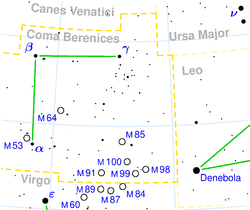
Diadem
A diadem is a type of crown, specifically an ornamental headband worn by monarchs and others as a badge of royalty. The word derives from the Greek διάδημα diádēma, "band" or "fillet", from διαδέω diadéō, "I bind round", or "I fasten".
The term originally referred to the embroidered white silk ribbon, ending in a knot and two fringed strips often draped over the shoulders, that surrounded the head of the king to denote his authority. Such ribbons were also used to crown victorious athletes in important sports games in antiquity. It was later applied to a metal crown, generally in a circular or "fillet" shape. For example, the crown worn by the kings of Anglo-Saxon England was a diadem, as was that of a baron later (in some countries surmounted by three globes). The ancient Celts were believed to have used a thin, semioval gold plate called a mind (Old Irish) as a diadem. Some of the earliest examples of these types of crowns can be found in ancient Egypt, from the simple fabric type to the more elaborate metallic type, and in the Aegean world.

Alpha Comae Berenices
Alpha Comae Berenices (Alpha Com, α Com, α Comae Berenices) is a star in the constellation Coma Berenices (Berenice's Hair). Although it has the Bayer designation "alpha", at magnitude 4.32 it is actually fainter than Beta Comae Berenices. It has the traditional name Diadem. It is said to represent the crown worn by Queen Berenice. A name occasionally seen is Al Dafirah, from the Arabic الضفيرة ađ̧-đ̧afīrah "the braid".
In Chinese, 太微左垣 (Tài Wēi Zuǒ Yuán), meaning Left Wall of Supreme Palace Enclosure, refers to an asterism consisting of α Comae Berenices, η Virginis, γ Virginis, δ Virginis and ε Virginis. Consequently, α Comae Berenices itself is known as 太微左垣五 (Tài Wēi Zuǒ Yuán wǔ, English: the Fifth Star of Left Wall of Supreme Palace Enclosure.), representing 東上將 (Dōngshǎngjiāng), meaning The First Eastern General. 東上將 (Dōngshǎngjiāng), westernized into Shang Tseang, but the name Shang Tseang was designated for "v Comae Berenices" by R.H. Allen and the meaning is "a Higher General"
Diadem (horse)
Diadem (1914–1931) was a British Thoroughbred racehorse who won the 1000 Guineas in 1917. She went on to become a top sprinter, recording two victories in both the King's Stand Stakes and the July Cup. In total she won 24 of her 39 races. Diadem was bred and owned by Edgar Vincent, 1st Viscount D'Abernon, and trained by George Lambton. The Diadem Stakes at Ascot Racecourse was named after her.
Background
Diadem was a chestnut filly bred by Edgar Vincent, 1st Viscount D'Abernon and foaled in 1914. She was sired by Epsom Derby and Irish Derby winner Orby. As a stallion Orby sired Derby winner Grand Parade and Champion Stakes winner Orpheus. Diadem's dam was Donnetta, a daughter of Donovan.
Racing career
1916: Two-year-old season
Diadem won the New Coventry Stakes at Newmarket by two lengths from Golden Maid. She then won the five-furlong Fulbourne Stakes at Newmarket by three lengths from Sunset Glow. At the end of the year she also won the five-furlong Moulton Stakes at Newmarket.
Older
Older may refer to:
- "Older / I Can't Make You Love Me," a song from the aforementioned album

Older (George Michael song)
"Older" is a single released by George Michael in 1997. It was also released as an EP under the name "The Older EP". The single's b-side is a cover of Bonnie Raitt's single "I Can't Make You Love Me". The single peaked at #3 in the UK Singles Chart, peaking behind his previous single "Spinning the Wheel" by just one place.
Music video
The official music video for the song was directed by Andy Morahan.
Track listings
All songs were written by George Michael, except where noted.
"The Older EP"
CD single
Promo CD single
Charts and certifications
References
External links

Older (album)
Older is the third studio album from George Michael, released in Europe on 13 May 1996 through Virgin Records and one day later in the United States. The American release was the very first album released by DreamWorks Records. It was his first album since 1990's Listen Without Prejudice, Vol. 1 – the five-and-a-half-year gap was due to the controversial legal battle that Michael experienced with his record company. Michael dedicated three years straight in the recording of Older, and the album found him exploring new musical territories in a more serious fashion compared to his previous work.
At the time of release, the album was a huge commercial hit, particularly in Europe, but was received in America with a lukewarm critical approval and mediocre sales figures. In the UK, the album was particularly notable for producing six Top Three hit singles in a two-year span, creating a record still unsurpassed. The high sales of the album presaged a re-issue of the album under the name of Older & Upper eighteen months after its original release.
Podcasts:

